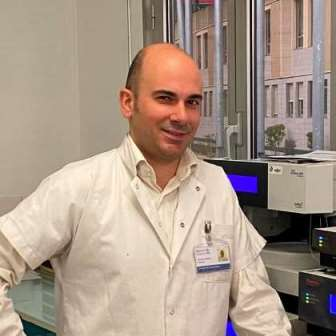Nitro Group Containing Drugs
A special issue of Pharmaceuticals (ISSN 1424-8247). This special issue belongs to the section "Medicinal Chemistry".
Deadline for manuscript submissions: closed (25 October 2022) | Viewed by 32297
Special Issue Editors
Interests: medicinal chemistry; anti-infectious; anti-proliferative, anti-viral, heterocycles; nitroimidazoles; monoelectronic transfer; organic electron donors
Special Issues, Collections and Topics in MDPI journals
2. APHM, Pharmacy Department, Service Central de la Qualité et de l' Information Pharmaceutiques, 147 Bd Baille, 13005 Marseille, France
Interests: medicinal chemistry; heterocyclic chemistry; Plasmodium; Leishmania; Trypanosoma; nitroheterocycles
Special Issues, Collections and Topics in MDPI journals
Special Issue Information
Dear Colleagues,
The nitro group is a very unique functional group in medicinal chemistry as a strong electron-withdrawing and quite polar group. Although found in medicines for a long time, due to metabolic liabilities, the nitro group has toxicity issues. It is often considered a structural alert or toxicophore leading to mutagenicity and genotoxicity in most medicinal chemists’ minds.
However, numerous nitro-drugs take advantage of bioreductive activation mechanisms mainly in the antibacterial and antiparasitic fields. Recently, renewed interest in nitro drugs has led to the approval of fexinidazole to treat human African trypanosomiasis (HAT), a neglected tropical disease. Due to its unique properties, the nitro group has found great interest in the development of anticancer, antitubercular and antiparasitic agents, as well as hypoxia-activated prodrugs. Nitro groups have also been found in the development of self-immolative spacers (linkers) to overcome limitations for drug delivery and have attracted wide interest in medicinal chemistry. In this context, many studies have been undertaken on the structure–mutagenicity or structure–genotoxicity relationships of drugs containing nitro groups.
The aim of this Special Issue is to summarize the state of the art and the latest findings in the field of biologically active nitro-containing molecules, as well as to elucidate future directions.
Areas of interest include, but are not limited to:
- Drug discovery
- Medicinal chemistry
- Drug synthesis
- SAR studies
- In vitro/in vivo activity
- Chemotherapeutic targets
- Toxicity studies
- Toxicity management
- Prodrugs
- Self-immolative spacers
- Probes
Prof. Dr. Patrice Vanelle
Dr. Nicolas Primas
Guest Editors
Manuscript Submission Information
Manuscripts should be submitted online at www.mdpi.com by registering and logging in to this website. Once you are registered, click here to go to the submission form. Manuscripts can be submitted until the deadline. All submissions that pass pre-check are peer-reviewed. Accepted papers will be published continuously in the journal (as soon as accepted) and will be listed together on the special issue website. Research articles, review articles as well as short communications are invited. For planned papers, a title and short abstract (about 100 words) can be sent to the Editorial Office for announcement on this website.
Submitted manuscripts should not have been published previously, nor be under consideration for publication elsewhere (except conference proceedings papers). All manuscripts are thoroughly refereed through a single-blind peer-review process. A guide for authors and other relevant information for submission of manuscripts is available on the Instructions for Authors page. Pharmaceuticals is an international peer-reviewed open access monthly journal published by MDPI.
Please visit the Instructions for Authors page before submitting a manuscript. The Article Processing Charge (APC) for publication in this open access journal is 2900 CHF (Swiss Francs). Submitted papers should be well formatted and use good English. Authors may use MDPI's English editing service prior to publication or during author revisions.
Keywords
- nitro group
- nitro- drugs
- nitroreductases
- bio-reduction
- pro-drugs
- mutagenicity
- genotoxicity
- antiparasitic
- antibacterial
- anti-cancer







